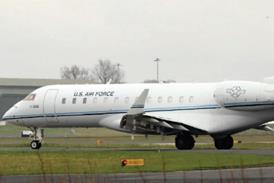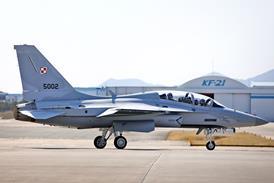Peter Sadler is managing director of Flight Training Europe. The cheerful Australian, whose background is in military test piloting, heads the commercial flight training school. Set within the boundary of Jerez International airport in south-western Spain, the campus provides ab initio training to around 150 students each year, working closely with airlines including BA CityFlyer, British Airways, Flybe, GB Airways and Thomsonfly.
How did you get started?
I spent 20 years in the Royal Australian Air Force from 1968 to 1988. In 1977 I completed training in the UK at the Empire Test Pilots School, Boscombe Down, and the last 10 years of my military career were largely spent test flying in Adelaide. After leaving the RAAF I returned to the UK and worked at the International Test Pilot School in Cranfield, carrying out contract test flying and test flying training.
This took me all over the place, flying aircraft such as the Harbin Y-12, a Chinese short take-off and landing transport, before I moved back to Australia in 1993 to work at the Australian Aviation College, now Flight Training Adelaide.
I was there until 2003, when BAE Systems, who owned it, asked me to come back to Europe to oversee the sale of the Flight Training Europe Jerez campus, which brought me here.
What happened next?
BAE Systems wanted to move out of civil flight training, and were keen to sell. It was after 9/11, which had slowed down many areas of the aviation industry, but I believed there was a future for the school and led a management buy-out with two colleagues. Things were slow for the first couple of years as the effects of 9/11 lingered, but from mid-2005 we experienced a turnaround along with the industry as a whole. From being under-subscribed, we are now operating at capacity and are having to turn away business. Our intention is to increase capacity in the future but, at the same time, to retain the quality of the training here at Jerez.
What facilities do you have?
We offer a 15-month fully residential, single campus ab initio course, where we bring people with no previous flying experience up to the point where they are ready for type rating with an airline. Our aircraft fleet consists of 20 Piper Warriors, eight Piper Seneca 3s and one Slingsby Firefly. This fleet is complemented by a variety of simulators including two Frasca cockpit procedures trainers, two Seneca FNPT2s as well as a Hawker 125-800 for multi-crew and jet orientation training. We are in the process of installing a third FNPT 2 as well as assessing a replacement for the Hawker 125 simulator.
Where do you find instructors?
There is a recognised shortage of instructors, which is a problem throughout the industry. Ours come primarily from the UK, Spain and further afield in Europe, with experience ranging from commercial aviation to air force backgrounds like mine. In recent years the experience level of instructors coming to the school has reduced markedly and one of our major challenges is to maintain both the level of expertise and the standardisation of our instructor workforce. To do that we are forced to provide much more training both during the induction and during the development of the instructors while they are here.
Are you living the dream?
Of course! The success for me has been building the reputation of the school and watching our students go on to bigger things as they work for the major airlines. Graduates from Jerez are already reaching middle management positions as captains and trainers with a variety of airlines. Watching the school emerge from near closure to where it is today has been a personal delight.
For more information, visit www.flighttrainingeurope.com
Source: Flight International























